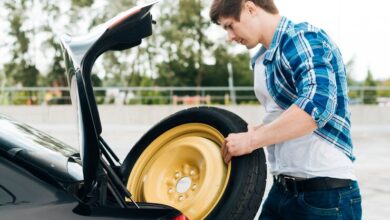https://guia-automovil.com/2019/07/31/como-hacer-al-auto-mas-rapido

Do you want to make your car faster and enhance its performance? You’re not alone! Many car enthusiasts are constantly seeking ways to boost their vehicle’s speed and capabilities. Whether you’re a seasoned racer or simply someone who loves the thrill of a fast ride, understanding how to optimize your car’s performance can make all the difference. In this guide, we’ll explore a range of strategies to help you achieve greater speed and efficiency.
Understanding Vehicle Performance
When it comes to enhancing a vehicle’s performance, several factors come into play. Engine power, aerodynamics, weight, and tire selection are all critical elements that can affect how fast and efficient your car is. By understanding these key factors, you’ll be better equipped to make informed decisions about which modifications are right for your vehicle.
Engine power plays a significant role in determining speed. The more powerful the engine, the faster the car can go. However, it’s not just about raw horsepower; how the engine delivers that power is equally important. Aerodynamics, on the other hand, involves the design of the car’s body and how it moves through the air. Reducing drag can lead to better fuel efficiency and higher speeds.
Weight reduction is another crucial aspect. A lighter car requires less energy to move, which can significantly impact acceleration and top speed. Finally, tire selection is vital for ensuring that your car has the necessary grip and handling, especially when navigating corners at high speeds.
How to Increase Engine Power
There are several methods to boost your engine’s power. One common approach is tuning, which involves adjusting the engine’s settings to improve performance. This can be done through software updates or by physically modifying engine components. Tuning can lead to significant gains in horsepower and torque.
Upgrading intakes and exhausts is another effective strategy. Cold air intakes allow your engine to take in denser, cooler air, resulting in more efficient combustion and increased power. Similarly, performance exhaust systems reduce backpressure, allowing the engine to expel gases more efficiently.
Performance chips are electronic devices that modify your car’s engine control unit (ECU) to enhance performance. They can adjust fuel injection, ignition timing, and other variables to maximize power output. These chips are an excellent way to achieve noticeable improvements without major modifications.
Enhancing Aerodynamics
Reducing drag is essential for improving a car’s aerodynamic efficiency. One way to achieve this is by adding spoilers, which help keep the car stable at high speeds by increasing downforce. This added stability can lead to better handling and improved speed on the track.
Diffusers are another aerodynamic component worth considering. They manage airflow under the car, reducing turbulence and drag. By directing air smoothly towards the rear of the vehicle, diffusers can significantly enhance performance.
Side skirts are another useful addition. They prevent air from getting underneath the car, further reducing drag. By keeping the car closer to the ground, side skirts improve stability and handling, making them a popular choice among performance enthusiasts.
Reducing Weight
Reducing the weight of your car can have a profound impact on its performance. Every pound you eliminate makes your vehicle lighter and more agile. One effective way to achieve this is by using lightweight materials such as carbon fiber or aluminum for body panels and interior components.
Removing unnecessary items from your car is another simple yet effective weight-reduction strategy. Consider taking out things like spare tires, heavy seats, or non-essential interior parts to shed extra pounds.
Another option is to replace heavy components with lighter alternatives. For example, swapping out steel wheels for alloy ones can lead to significant weight savings. Every little bit counts when it comes to optimizing performance.
Selecting the Right Tires
Tire selection plays a crucial role in determining a car’s speed and handling. The right set of tires can significantly improve grip and traction, allowing for more aggressive driving. When choosing tires, consider factors such as tread pattern, compound, and size.
Performance tires are designed to provide better traction in both dry and wet conditions. They often have a softer compound that offers superior grip but may wear out faster than standard tires. It’s essential to choose a tire that matches your driving style and conditions.
Tire maintenance is equally important. Regularly check and maintain proper tire pressure, as underinflated or overinflated tires can negatively impact performance. Additionally, ensure your tires are aligned and balanced to maximize their lifespan and performance.
Maintenance and Upkeep
Regular maintenance is vital for ensuring your car’s performance stays at its peak. Routine checks and servicing can prevent potential issues and prolong the life of your vehicle. Keep an eye on essential components such as the engine, transmission, brakes, and suspension.
Oil changes are one of the most important maintenance tasks. Fresh oil keeps your engine running smoothly and prevents wear and tear. Make sure to follow the manufacturer’s recommended oil change intervals to keep your engine in top shape.
Alignments and tune-ups are also crucial. Properly aligned wheels ensure even tire wear and improve handling. Regular tune-ups can catch minor issues before they become major problems, saving you time and money in the long run.
Conclusion
Enhancing your car’s speed and performance is a rewarding endeavor that requires careful consideration and planning. By understanding the key factors that influence performance—such as engine power, aerodynamics, weight, and tires—you can make informed decisions about the modifications that will best suit your needs.




